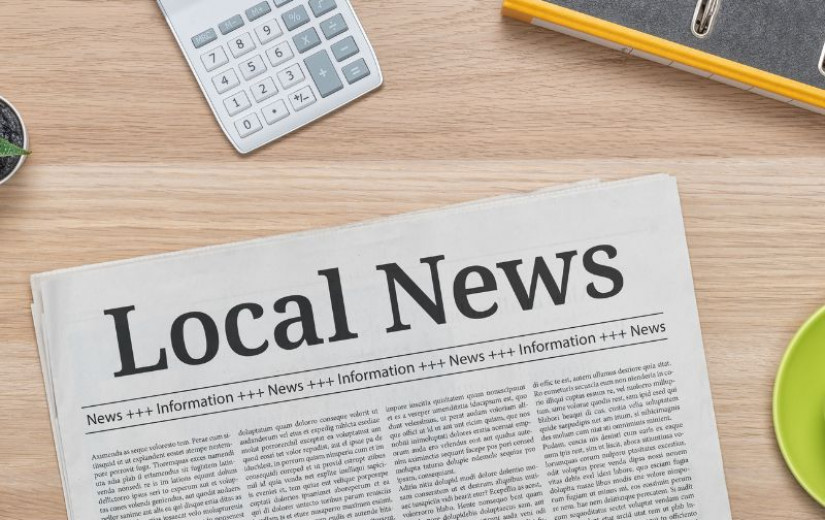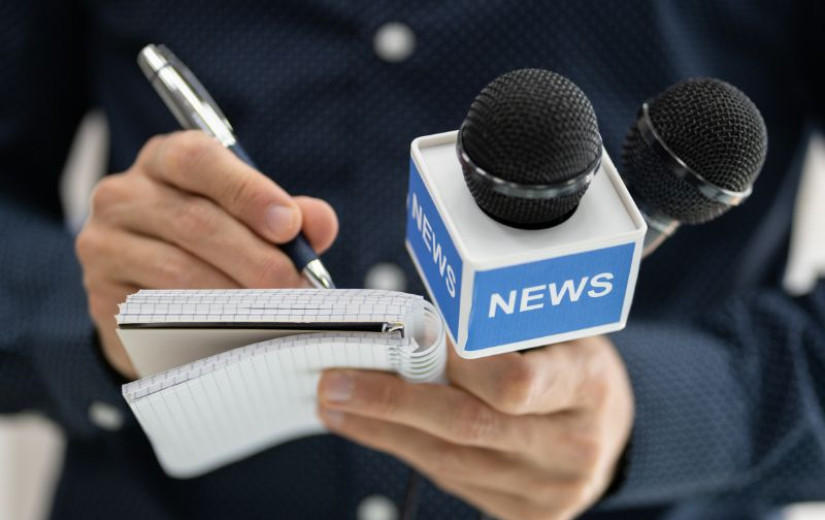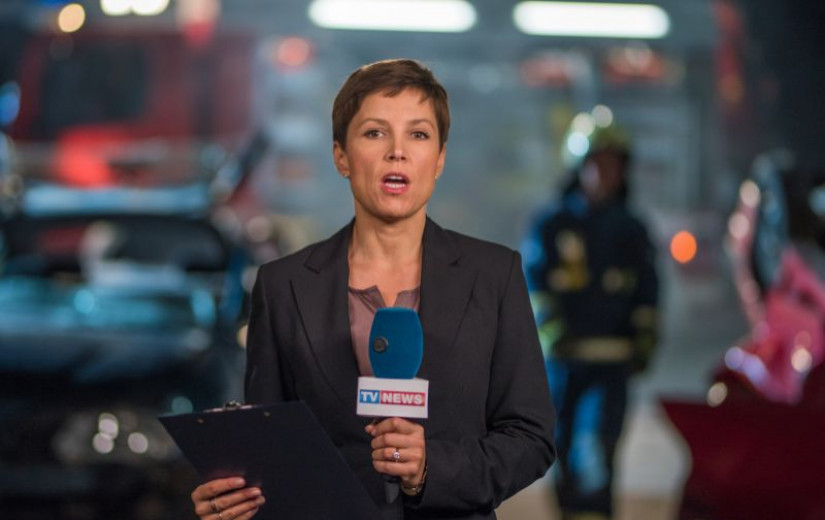
From Long Bright River to Deli Boys to Dope Thief, Philadelphia now finds itself squarely at the center of the prestige TV world.
Get a compelling long read and must-have lifestyle tips in your inbox every Sunday morning — great with coffee!

Philly is having its TV moment. / Photo-illustration by Leticia R. Albano
Before a single scene of the Kensington-set Long Bright River was shot, Liz Moore gathered her writing team and issued a kind of warning: Authenticity was nonnegotiable. No lazy postcard version of Philadelphia, but the version that a longtime Philly resident like herself knew — lived-in, wary of outsiders, and allergic to cliché. “We had a long conversation that first day about if and when we were going to use the word jawn,” Moore says. The rule they eventually determined was simple: “We would not write it for any character who would not naturally say it.”
That kind of hyperspecific vigilance about local vocabulary — a refusal to lean on overdone references or Philly shorthand — defined the show’s ethos from the inside out, down to the removal of a single sign on set that dared to advertise “Philly cheesesteaks” in a Kensington corner store. Moore immediately clocked the redundant decor and knew a non-Philadelphian set dresser had probably been responsible for it. “There is no world in which [that sign] would say that,” Moore says, with the firm authority of someone who’s earned the right to say so.

Dash Mihok and Amanda Seyfried in Long Bright River / Photograph courtesy of Peacock
The Peacock series, an adaptation of Moore’s 2020 novel of the same name that premiered in March, shares the perspective of Mickey (Amanda Seyfried), a born and bred Philadelphia police officer whose investigation into the neighborhood’s opioid epidemic converges with the disappearance of her sister, Kacey (Ashleigh Cummings), who lives with addiction. The sensitive subject matter and rare depiction of Kensington made it all the more important for Moore and showrunner Nikki Toscano to get all the particulars just right — especially since they shot the majority of scenes in Brooklyn and Yonkers, New York. “We wanted to make sure that we were capturing the spirit of the community, at all times, in the way that Mickey would see it,” Toscano says. “What the camera notices is what Mickey would notice.”
Increasingly, these kinds of Philly-specific discussions and considerations are becoming standard in Hollywood writers’ rooms. In crime thrillers, drug-related dramas, and unconventional comedies, Philadelphia — and its diverse surrounding areas — keeps showing up as the backdrop of choice for both streaming and network television. No longer the sole small-screen torchbearer for the city, It’s Always Sunny in Philadelphia has survived long enough (its 17th season premieres this month) to see an entire ecosystem of narratives crop up beside it: Abbott Elementary, Mare of Easttown, Servant, and The Madness, to name several. And just this year, in addition to Long Bright River, there’s Hulu’s Deli Boys, Apple TV+’s Dope Thief, and the second season of Netflix’s Tires. Not to mention Task, the next HBO project from Mare of Easttown creator Brad Ingelsby, set to premiere in September.

Abbott Elementary visits Paddy’s Pub in the upcoming crossover episode of It’s Always Sunny in Philadelphia. / Photograph courtesy of FX Networks and Hulu
Once seen as the overlooked middle child between New York and D.C., Philadelphia has quietly become impossible to ignore. Its rising cultural capital — bolstered by a manageable cost of living, a nationally recognized food and music scene, a recent Super Bowl trophy, and outsized electoral influence — has pushed the city into the national spotlight more frequently and forcefully than nearly ever before. And that light, captured in sporadic big-budget movies, has finally made its way to television, where showrunners are beginning to see Philly not just as a different location, but as narrative terrain rich with untapped accents, iconic cuisine, and an underdog energy that cuts across blue-collar sprawls, drug-riddled blocks, and upper-class enclaves. “As Philadelphians, we’re sort of used to being ignored and gotten wrong and misrepresented,” says longtime Philly resident Sam Adams, who writes about TV for Slate. “This is an interesting place with all sorts of stuff going on. It’s just like, what took you so long?”
But the sudden surge in productions goes beyond the city’s renewed relevance — or even its increasing tax credits, which have incentivized more streamers to set up shop within its varied digs. It’s tapped into something elemental. At a time when audiences cherish authenticity, and stories about inequality and resilience carry more weight, many Philly-grown writers have recognized (and impressively convinced studio execs of) the value in accurately depicting the personal corners of their city, whether that’s taking cameras to Delaware County, re-creating the El, or building out Grays Ferry on a Midwestern studio lot.
“How do you separate yourself in a genre that’s been done and done again? Have a very distinct sense of place,” Ingelsby says. “That sense of place is a character as strong as any character in the narrative — and I think that’s what Philly has.”
•
If you were to pinpoint the instigator for Philly’s jolt in television production, Mare of Easttown feels like the right place. When Ingelsby’s seven-episode crime drama premiered in the spring of 2021, it became an immediate national obsession. And not necessarily because of the intriguing mystery at the core of its story, but for, well, everything else — from Kate Winslet’s Delco accent to her “mythical” off-set Wawa visits to the Yuenglings, Herr’s potato chips, and hoagies that characters inevitably consumed within their tight-knit neighborhood.

Kate Winslet in Mare of Easttown / Photograph by Sarah Shatz/HBO
Each week, more outlets covered the growing phenomenon by interrogating Winslet’s new Philly-speak, which she called one of the “top two hardest dialects” she’d ever learned for a role. (The other? Her Polish-Armenian accent in Steve Jobs.) Local journalists broke down her vowel sounds, while others deciphered the accent’s nuances as though it were a foreign language. Even Saturday Night Live parodied the show’s extreme local flavors, poking fun at Philly’s regional specifics and refusing to let the news cycle die. “What was interesting to me about Mare was to tell a story about people who hadn’t been on screen — and to not be condescending in any way,” Ingelsby says.
Seven months later, Abbott Elementary debuted on ABC and showcased a completely different side of the city to mainstream audiences. Uninterested in depicting the area’s bleak winter palette of blues and grays, West Philadelphia native and creator Quinta Brunson filled her mock-umentary — about an underfunded West Philly elementary school — with color and humor, as well as a commitment to her hometown. Not as zany as Always Sunny or as familiar as an office setting, Abbott became a quick ratings hit thanks largely to Brunson’s perspective — her countless Philly references and a Black cast representative of a neighborhood rarely depicted for a broad audience.
“What’s funny about Mare is, people were like, ‘Oh, she got the Philly accent down,’ and I was like, ‘That’s the white Philly accent,’” Brunson told the Inquirer ahead of the show’s debut. “Black people are different from the white people are different from the Asian people in West Philly. And then we’re all different from all the people in North Philly.”

The cast of Abbott Elementary / Photograph courtesy of Disney
After years of ceding production ground to more generic American cities, Philadelphia suddenly had two vastly different shows highlighting two vastly different parts of its region, a testament to Ingelsby’s and Brunson’s cultivation of the specifics of their roots. It was no longer enough for showrunners to plug in vanilla Italian American accents, or acceptable for them to forget to reference real locations, in their Philadelphia-based scripts. There was a “level of reality and care going into it,” Adams says, which reaped “the benefits of this really underexplored culture.”
That opportunity for exploration was what initially prompted Moore to establish Kensington as her book’s (and later show’s) primary location. A Massachusetts native, she moved to Philadelphia 16 years ago with her husband and immediately began writing nonfiction about those suffering from addiction in Kensington. She “felt a personal pull to the neighborhood,” she says, which prompted her to volunteer and lead free writing workshops at the Thea Bowman Women’s Center. “I was really moved by what I saw,” she says.
The experiences provided the seeds for her novel, which she published two years after optioning the screenplay rights in 2018. Toscano, a University of Delaware graduate, was familiar with the city, but her frequent visits with neighborhood residents also helped her “gain an awareness of the neighborhood that we were portraying,” she says. “Because I’ve become very close with a lot of people in Kensington, it was really important to me and Nikki and everyone working on the project to ensure that the community was well represented in the series,” Moore adds.

Saagar Shaikh (left) and Asif Ali in Deli Boys / Photograph courtesy of Hulu
Abdullah Saeed, a Temple grad who spent eight years in the city, had a similar reason for setting Deli Boys in his former home. The writer’s 10-part comedy series follows two Pakistani American brothers who discover that their late father’s convenience store chain is actually a front for a large-scale drug enterprise. At first, Saeed considered setting the story in New York City, but pivoted after realizing that the wealth the family would have needed to amass as a successful drug operation would have exceeded the show’s ambitions. Then Michelle Nader, a South Philadelphia native (and former Geno’s Steaks commercial star), joined the writing staff and persuaded him to lean further into his past.
Looking back on his college years, Saeed remembers Philly as a formative place where he discovered his passions and interests, which included making beats, navigating the hip-hop underground, writing for short-lived mixtape magazines, food blogging at Philadelphia Weekly, and gigging with indie bands while living near Dickinson Square. “I was a kid from nowhere, sort of been through a lot, and I found kinship in this place,” he says. “Philly was there for me when I really needed it, when I was really estranged from myself and the world.”
Nader, who went to Penn as an undergrad, was captured by the “really provincial” way Saeed wrote about Philly in the first episode, which sees the brothers, Mir (Asif Ali) and Raj (Saagar Shaikh), unwittingly take over their dad’s business and learn how to manage a major market’s cocaine supply. Their struggle to learn the illegal trade felt authentic to South Philly’s scrappy nature. “Hustling is such an ingrained street-level part of life in Philadelphia,” Saeed says. “These guys are learning to hustle cocaine in Philadelphia. And I’m currently learning how to hustle scripts set in Philadelphia. It’s, like, we’re all on a grind.”
When deciding where to set Task, Ingelsby relied on his upbringing. The Chester County native and current Berwyn resident knew he wanted to root his story — about the dual lives of an FBI agent (Mark Ruffalo) and a sanitation worker (Tom Pelfrey) on opposite ends of a drug operation — in his familiar Philly suburbs. “I think it’s a way of life that I know and that I feel comfortable writing about,” he says. “Specifically about the Delco area, because so much of my childhood was spent there.” The series takes place all around the region, but Ingelsby was deliberate in his location choices — Ruffalo’s character grew up in Broomall “just given where he is in life, his job, and where his daughter goes to school,” he says, while Pelfrey’s low-income trashman made better sense in Elverson, “where you could have a piece of land for relatively cheap.”
“It always starts with a gut instinct,” Ingelsby says. “Would this person live here or would they go to this place or would they eat here? I think you have to use that as the guide.”
•
It’s one thing to set a show in Philly, and another to actually shoot here. When the team behind Dope Thief, based on Dennis Tafoya’s 2009 novel of the same name, discussed where to set up production for the Philly-centric story, they thought about Chicago first. But Tafoya and series writer, director, and producer Peter Craig pushed back against the idea, arguing that they would lose the city’s unique textures and landscape. They got their request once executive producer and legendary filmmaker Ridley Scott visited and insisted on Philly.
The benefits are apparent as soon as the first few episodes. The show follows a pair of lifelong Philly friends, Ray (Bryan Tyree Henry) and Manny (Wagner Moura), who pose as DEA agents and loot drug and cash stashes from low-level criminals. But their plans take a detour when one of their heists exposes a major narcotics operation across the entire Eastern Seaboard. Using some of M. Night Shyamalan’s film crew and studios, Craig appreciated the city’s rapid shift from urban center to rural farmland, letting him migrate from frantic foot chases through rowhome back yards to barnyard shootouts in Chester County. It’s a versatile aesthetic not many other major cities can provide. “I feel like that’s the heart of the show, because unlike a lot of cities that I’ve been in, Philly’s really different when you get further out,” Craig told Esquire. “It changes rapidly, and I love that.”
Perhaps also motivating their decision to shoot throughout the region? The state’s tax incentives, which have annual caps higher than those in many states in the country. As productions have decreased — or moved overseas — thanks to the effects of the pandemic and 2023 Hollywood labor strikes, the Greater Philadelphia Film Office has aimed to stay competitive with the tax credits to lure more movies and shows into the city. As it stands now, Pennsylvania offers a 25 percent tax credit to film and television productions that spend at least 60 percent of their total budget within the state. And there’s hope that will increase. At the end of April, State Representative Joe Ciresi reintroduced legislation to expand the tax credit from $100 million to $125 million “to make Pennsylvania more competitive as a site of potential film projects.” “A lot of states are really upping their game right now with increasing their incentives, taking limits off, and uncapping altogether in some cases,” says Nicole Shiner, co-executive director of the Greater Philadelphia Film Office. “We’re really hoping that that gains some traction this budget cycle. Any increase is good.”
The idea behind tax credits is that the production rebate losses will be made up by cast and crew spending on hotels, restaurants, and retail — stimulating economies on the blocks where they’ve set up shop. That might be old news for New Yorkers used to being bombarded by production trucks, but it’s a nicer sight for many Philadelphians eager to bring revenue and status to their neighborhoods. “I do think that they welcome the star-fare,” says film office co-executive director Erin Jackson Wagner. “We do a really good job of telling our story and how economic impact really does make a difference in these areas. People are buying coffee in the cafes. They’re buying dresses in the boutiques. They’re buying lumber in the yards. We’re trying to get that out there.”

A scene from the upcoming HBO miniseries, Task / Photograph by Peter Kramer/HBO
Ingelsby encourages that kind of engagement — to support his suburban shooting locations, sure, but also to immerse his actors in the communities they’re meant to be representing. Ahead of shooting Task, for example, Ingelsby encouraged Ruffalo to embed himself throughout the Delaware Valley. The actor trained with the Easttown police chief and visited A Cut Above deli in Newtown Square (an Ingelsby favorite), helping him ease into and learn about his new surroundings. “You’re asking a group of actors to come into a community and feel like they belong in this community so that the show has a sense of place and authenticity,” Ingelsby says. “Go hang around, drive around the streets, hang out at the Wawa or the diner or the bar, and let it seep into your skin a little bit.”
Henry applied that mentality on Dope Thief. As a star and executive producer, he spent the first half of 2023 shooting in Philly before production halted due to the labor strikes. Instead of returning home to Los Angeles, he stayed in Center City and ended up living there for more than a year. He checked out the city’s restaurants, went tubing in — and biking along — the Schuylkill, and made frequent trips up to New Hope.
The value was immense. Henry wanted to make sure Ray felt like a born and bred Philadelphian — someone true to his family history, who never wanted to leave his hometown. He started to feel a kinship with the city’s people even while working. “If we’re filming in West Philly at three o’clock in the morning and the neighbors wanna know what’s going on, we need to tell them,” he told the Ringer website. It was a way to give back and feel like he’d moved in. As Adams notes: “Actors love specificity. They love details. They love accents. Different ethnic, cultural backgrounds. All of a sudden, they [have] this whole new, weirdly underused sandbox to play in.”
Moore would have liked to have shot Long Bright River in Kensington, but ultimately decided against it. “That would have felt extremely intrusive,” she says. Instead, “we brought Kensington to us,” Toscano says, turning parts of Brooklyn and Yonkers into a formidable simulacrum. That meant hiring Kensington graffiti artists to spray Kensington-specific tags, casting Philly background actors, inserting Mummers clubhouses into the script, photographing murals for interstitial footage, tapping the Roots’ James Poyser to help compose the score, and leaning on a variety of local technical consultants. “We had to think visually about how to include some representation of the realities of Kensington and Philadelphia — the way that the neighborhood is underserved but also the more vibrant parts of it,” Moore says.

Colman Domingo in The Madness / Photograph by Amanda Matlovich/Netflix
An early episode includes a holiday decorating party in a community garden drawn from a real one that the House of Grace Catholic Worker hosts. Later in the series, Mickey stops by a Thanksgiving dinner that includes neighbors snacking inside and outside her friend’s rowhouse — a situation Moore has found herself in before. It is a brief reminder of the convivial life Kensington has despite the constant headlines about its dense drug market and unhoused population. “[We] don’t have this horrific experience that’s always portrayed when people are live streaming it in such an exploitative manner,” says Sarah Laurel, founder and executive director of Savage Sisters, a Philly nonprofit that mitigates harm and offers resources for those suffering from substance abuse. Laurel consulted for Moore and Toscano and even offered assistance to Cummings as she prepared for her role. “I’m very pleased with the way that humanity was brought to the screen in different ways,” she says.
There were fewer sensitivities to monitor in Deli Boys, but its creators remained vigilant as they transformed areas of Chicago into South Philly. They ultimately passed on shooting city exteriors because of budgetary concerns, but scouted areas that had a similar feel to Grays Ferry intersections and corner grocers. At one point, Nader, “not usually the reality cop on anything,” she says, took issue with a street meant to represent her old neighborhood, which had trees lining the sidewalk. “We can’t do that,” she remembers saying. “That could never be Philly. We have to at least try to approximate a street.”
She and Saeed unloaded the Philly reference clip in the fifth episode, however, when Mir and Raj attend a drug lord’s Super Bowl party and discover his “museum” of Philly collectibles, including Vince Papale’s bar rag, a bust of Frank Rizzo, and Kevin Bacon’s baby tooth — “deeper cuts that are sort of for the Philly-heads,” Saeed says. They might have taken things a tad too far though. The kicker to the episode includes a reveal in which the Eagles lose the big game 76 to 6, a joke written well before the team’s parade down Broad Street. “Michelle and I were like, ‘Bro, you gotta be fucking kidding me,’” Saeed laughs. “I can’t believe that that’s in the show.”
•
There’s no question that Philadelphia has always struggled with a perception problem. It’s been haunted by the shenanigans of its die-hard fans, its persistent safety concerns over gun violence, and its population’s offensive disposition toward outsiders. It’s been bullied by the national media and called New York’s “sixth borough.” And it’s always embraced Rocky, its mythical cinematic hero, who gets knocked down and then gets back up, fostering an underdog, us-against-everybody mentality that each native has buried deep inside.
Not every television series can effectively depict that unique blend of self-loathing and civic pride, but each one understands the city’s truest attribute: its sense of community. Throughout the Philly-TV landscape, showrunners have made it a priority to satisfy the city’s parochial dynamics and family-oriented structure — its ancestral homes, urban lifers, and inquisitive attitudes that bind people to each other. “It just has a lot of heart, it has neighborhoods, and it’s not quite as transient as cities like New York,” Moore says. “There’s generation after generation of the same family living in the same place.”
“That was part of what we loved about Mare was that her ex-husband moved into the house right behind her,” Ingelsby says. “I was just at my aunt’s birthday party and there were 70 of us cousins and nephews all coming together. A lot of people want to get away from their family. Here, everyone lives close by.”

Shane Gillis and Veronika Slowikowska in Tires / Photograph courtesy of Netflix
The easiest way to depict these qualities? Through Philly’s unified sports culture. That often leads to characters wearing Eagles jerseys, hanging front-porch flags, and signing off conversations with “Go Birds,” something Henry learned to do during his stint in the city. It’s why Always Sunny once built an episode around a Chase Utley cameo, and why, more recently, Abbott Elementary got Jalen Hurts to Zoom into a classroom scene. It was only a matter of time before the pair of comedies participated in a couple of crossover events — further emphasizing the city’s connective tissue and shared passions.
Though the film office’s Wagner and Shiner don’t have many big productions in the pipeline for later this year, they have their hands full with a number of smaller indie projects, and both believe the current influx of shows will persuade another wave of writers to consider Philly — especially should any of these recent series get picked up for a second season. That might give Saeed, for example, a chance to shoot Deli Boys on location — like in FDR Park, or parts of his Temple campus. “There’s a ton of things to mess with,” he says. “That’s what Philly provides.”
Ultimately, it’s the specificity and appreciation for Philly that give these stories their juice, distinguishing them from every other comedy or crime show set in a familiar city with familiar locations and familiar accents. “I think of a show or a story as the aggregate of many little details,” Ingelsby says. “Each little detail, if you look at it separately on its own, isn’t that important. But the aggregate amounts to something that matters. And I think if you can be really vigilant about that from the jump, then at the end of the show, an audience goes, ‘Oh, they knew what they were doing. They knew that place.’”
Published as “Home Videos” in the July 2025 issue of Philadelphia magazine.









